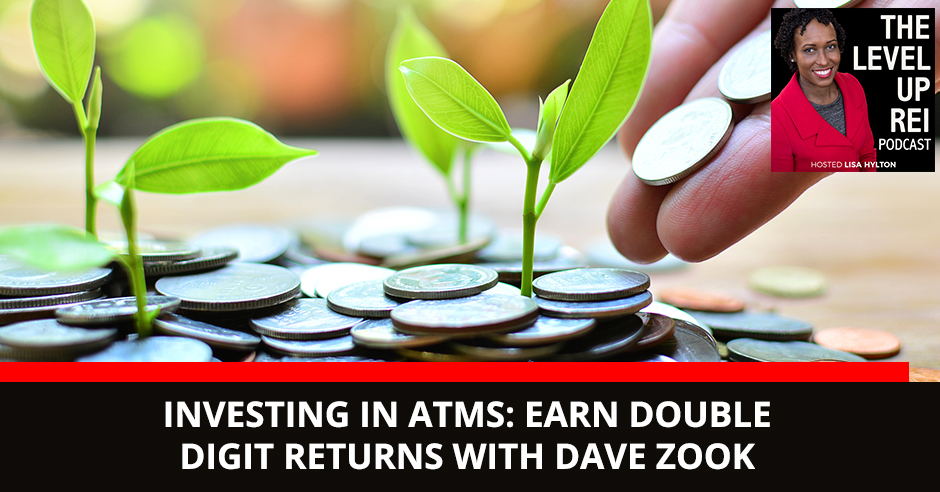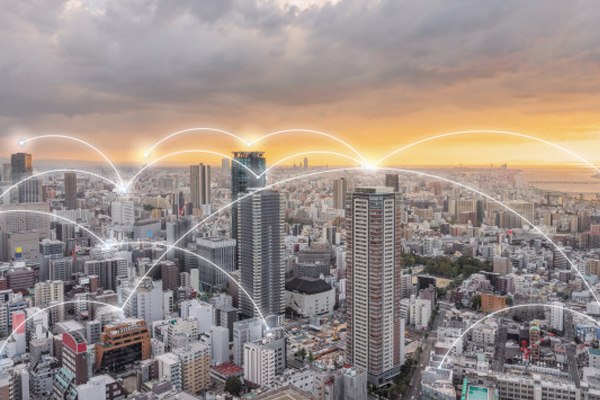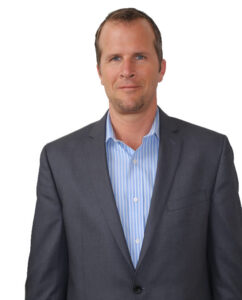
In this episode, Dave Zook, Founder and CEO of The Real Asset Investor, joins Lisa Hylton as he shares his story investing in real estate and how he’s earning double-digit returns through investing in ATMs. When you invest with great folks, your journey into real estate becomes brighter, Dave digs deeper into how his investing strategy works. Learn the importance of investing with the right team whether passively or actively that can turn your investing experience from frustration and misery to rewarding and a lot of fun. Dave and Lisa dive into the ATM investment space and the number of ways you can earn through this funnel as a passive investor.
—
Watch the episode here
Listen to the podcast here
Investing in ATMs: Earn Double Digit Returns with Dave Zook
I’m excited to bring another amazing episode. My guest on my show is Dave Zook. Dave is a successful business owner, syndicator, investment, and tax strategist. He has acquired more than $150 million of real estate since 2010 which includes several thousands of multifamily apartment units, multiple large institutional-grade self-storage facilities, and cleaner energy cold distillation units, which produce pharmaceutical-grade oil and liquids. His team is also one of the top five ATM operators in the country. I’m so happy to have you on. Welcome to the show, Dave.
I’m happy to be on your show. Thanks for having me on.
I met Dave on the Real Estate Guys’ Secrets of Successful Syndication that you were on. They had a virtual event earlier this 2020 and that’s when I learned about your business and investing in ATM. I was like, “This is amazing. I’ve never heard of this before.” I’m excited and wanted to bring you on. That way my audience could learn about your story and to dive deeper into investing in ATMs. To kick things off, can you share with us how you got started investing in real estate?
I made up my mind early in my career that I was not going to invest in real estate and I started investing in businesses. I was investing in businesses throughout my 20s and even early 30s. I wasn’t interested in real estate. I had seen my dad do it and I thought there’s got to be a better way to make money than this. Once my businesses started doing well and I got into a big tax problem. I had to pay hundreds of thousands, $500,000 in tax, and decided that wasn’t going to be me anymore. When I realized that real estate multifamily specifically could be a real tax protection vehicle, that’s when I got interested. That timing worked out great. That was 2010 when I first started investing in multifamily real estate. Tax protection part of that investment asset class, I love it as well as obviously a bunch of other benefits that come along with it but I got chased into this space because I had a tax problem.
What does it mean to invest in businesses? Were you a serial entrepreneur or were you a private investor, like an Angel investor into other people’s business?
I would say more of an investor and an entrepreneur. For as long as I can remember, I was an investor and entrepreneur in my teens. That was my thing. That’s what I like to do that I loved. For me, it almost feels like farming. You invest in an asset, you put good management in, you treat it well, you do what you’ve got to do to make it perform, you plant the seed and then you reap to harvest. That’s what investing is to me and I can’t get enough of it.
What would you say are some of your early lessons investing in real estate? When you started, were you investing passively in these multifamily deals or were you buying small ones on your own? What was it for you?
I started buying small ones, 4 and 5-unit buildings. I soon saw that that wasn’t moving the needle as far as getting me where I needed to be on the tax side and then I started on bigger deals. The biggest lesson I’ve learned over the years is investing with the right team whether that’s passively or actively and then having good management folks around me. When you invest with the right team with a great team of people, it can turn your investing experience from frustration and misery to very rewarding and a lot of fun. I do much more work on the front end on the team itself than I do on this specific asset that we go ahead and invest in. I’ve got people around me who now will do that, perform all the due diligence, and do what they need to do to make sure that the asset that we’re purchasing is a good fit and will perform well. Once I have a good team, we like to go out and do a lot of business together.

Earning Double Digit Returns: Multifamily real estate could be a real tax protection vehicle.
This brings up a key point as many of my audience are interested in investing passively into deals. I know one of the struggles that people have is finding that team. What advice do you give to people to help them to find those team members?
It’s a lot of work. I normally don’t go out looking for teams. You were part of the Real Estate Guys Syndication Event. There are different groups that put on those kinds of events. When you get around those people with those events, you realize how small our community is. When you start hearing a lot of good things about a specific person or a specific team, you start paying attention. I’ll give you an example. My self-storage team, when I first started doing business with them, I had been hearing about this team from a number of my investors. Some of them had been investing with them for a decade in a bunch of different deals. At one point, I was like, “That’s enough. I’ve been hearing about these people for long enough. I’ve got to figure out who are these guys.”
That was the start of it. When the door opens with that kind of introduction, it makes the vetting process so much easier because when it all comes down to it, you can do the internet, the Google search, you can do the background checks. You can try to gather as much as that information as you possibly can, but at the end of the day, I’m looking for a track record. I’m looking for performance. I’d much rather hear from their investors than I would hear from them. I want to talk to people who’ve done business with them for a while.
That brings me to the way you play in real estate these days. When I opened the show, we said that you play in the multifamily space, you also do self-storage, and then ATMs. For me, what I’m key about talking with you is ATM and the process of investing in that class. That’s where I would like to start. To kick things off, how does that process work?
Many people prior to you hearing about me and what I do, I never even looked at an ATM and as an asset that you can invest in. A lot of people think that ATMs are owned by banks. It never occurs to people that when they’re swiping the card and that transaction cost is $2 or $3, there’s some investor making a nice margin on that $2 or $3 surcharge. That’s exactly what happened. There were a number of ways to play the ATM investment space. Two of them primarily. One is you’re either mom and pop operator with somewhere between 100 and 200 ATM machines in a 50-mile radius. Typically, you cap out at 150 to 200 machines. That’s how much a mom and pop operator can handle.
On the other side of the spectrum, you have the biggest institutions. You have the Cardtronics and the publicly traded companies. There’s nobody in the middle. What we’ve done is we go out and play in the institutional space. We take down large institutional grade portfolios, it could be $5 million, $10 million, $20 million portfolios, and then I break that portfolio down in bite-size pieces, $104,000 pieces. Investors will come in and buy their 6 or 7 machines for $104,000. What happens when they do that, we then take those machines, roll them into our fund. We have a third-party management company that manages that fund, and we say to the investor that we’ll commit to you that you’ll make 3,373 transactions per month for your machines. Your portion of that $2 or $3 surcharge is $0.63.
It’s a way that we took the volatility out of ATM investing because there is some but we’ve taken it out. There are months when you may make 3,200 transactions and then we’ll kick-in our portion of the surcharge revenue, bring you up to where you should be. There are times when let’s say the tourist season is high and ATMs are being used heavier than normal and you might have 3,600 transactions. In that scenario, we keep anything over 3,373. We’re well aligned with the investor. The better the ATM performs, the better we do, the better the management company does, but it’s given a nice consistent return to investors that they can count on every month.
When I saw that, I was very intrigued. The fact that it almost feels like a guaranteed return.
Investing is like farming. You plant the seed and then you reap the harvest. Share on XIt is not guaranteed. With any investment, you’re going to have some risks. Let’s face it. If the government came out and said tomorrow that the US dollar is going away, we’re going to use Bitcoin from here on out, that would be a problem for our business model. However, we found a way to mitigate that risk. We’ve found a way to take them all totally out of the equation for an investor. We built in a nice little buffer in order for, let’s say, if there was a pullback or the market decline in ATM use, we haven’t seen any of that.
Over the last decade, we’ve seen not only an increased use of cash which surprises most people. They think cash has gone away. If not, it’s increasing. In fact, if we look over the years, there’s more than 50% more currency in circulation. Even more importantly, we do all kinds of market data but we also can see right inside our fund what that level of engagement is. That’s been very healthy. While it’s not a guaranteed return, knowing what we’ve got, doing all the market due diligence and studies, we feel it’s a very low-risk asset class.
A couple more questions here to get some further understanding. When an investor invests the $104,000, does that enable them to invest in 6 to 7 machines or is it $104,000 gives you one machine?
$104,000 gets you 6 or 7 machines. There is no difference in costs and recurrence. I’ll give you an example. If you’ve got a machine at a fast-food restaurant in the center of Times Square like we do, that machine is going to take on an extraordinary amount of traffic. That machine is going to cost quite a bit more and it’s going to have multiple interfaces. You’ll have multiple people using the machine at any given time. That machine is going to be much more expensive than a regular machine of ours at Walgreens. Again, it makes no difference to the amount that the investor is investing in. It makes no difference on the return but there may be some times. Most of the time you’re going to get seven machines. There are instances where you’ll get a unit that has six machines in it. The point is, you get a unit of ATM. There are either 6 or 7 machines in that unit.
The 63%, where are the fees? It feels like those fees are factored out differently.
There’s a number of different costs associated with this. Let’s say there was a $3 surcharge. You swipe the card, down the bottom of your slip it says you asked for $200. There’s $203 that came out of your account. There’s a $3 service charge. You, as an investor, gets $0.63 out of that. There are no costs attached to your side of the equation. There’s a lot of costs involved for Brink’s Security. They would have come around and installed the cash into your machine. You’ve got maintenance contracts, cost of the lease where the machine is at, administrative staff back at the office, and a fund manager. There’s a lot of costs that come out of the rest of that fee. Most of it goes to the management company because the management company is at the level where all those costs and fees flow to and that gets taken care of on their side. As a passive investor, you would not see any of those costs associated with running the business.
You’re getting $0.63 out of every dollar. The $0.30 something that is left, that’s going to the management company for their fees as well for return for the fund manager and then others.
Out of that $3 surcharge, you’re getting $0.63. A portion of that goes to cover the cost of the location, the lease, the purchase of the location agreement, and then the rest of it goes to the management company to cover all those costs that we mentioned.

Earning Double Digit Returns: When you start hearing a lot of good things about a specific person or a specific team, you start paying attention.
I’m curious, how did you get into the ATM space?
I was a multifamily apartment investor syndicator. I’ve invested in a whole bunch of different things. Again, I’ve been an investor since I was in my teens. While I was building my multifamily apartment syndication business and my network, we were acquiring lots of multifamily apartments. I was a passive ATM investor at the same time. This team who I got to know very well, both of them are a lifetime Lancaster County, Pennsylvania natives. They grow in this ATM business and I joined them as a passive investor. I was investing with them passively for a number of years. At one point, a good friend and mentor of mine introduced me to these guys.
I ended up investing with them over the next couple of years in the seven-figure range. At one point, they said, “We signed on to a large portfolio. Bigger than anything we’d ever taken down before. We could use some help.” They saw what I was doing in the multifamily space, I had quite a network, and I was able to take down large apartment buildings. They said, “Come and help us.” I joined the team, I partnered with them, and we were off to the races. Since then and over the years, we have scaled that business. As of now, we’re I believe in the top five spaces. We’re bearing down on that number four spot.
You guys are investing in ATM, do you have ATMs across the country in your portfolio?
We do.
What was curious to me was the process of where to set up an ATM? Is it like buying land kind of thing, there are locations that you can lease that come up for sale, come up for renewal perhaps that you can take over and then put an ATM there?
There’s a whole market around the multifamily space or the self-storage space where you have your brokers, your dealers, your lenders, your insurance guys that specialize in that product. There’s a whole market around ATM. It’s a much smaller market and nichey market but there is a market around it. Once you’re known and become a major player in that space, you have access to institutional-grade locations that mom and pop investors would not have access to. I’m talking about 300 McDonald’s in one city or I’m talking about 500 Walgreens in the State of Florida. That’s what’s considered an institutional-grade portfolio. The interesting thing to me was with COVID-19, I’ve talked to several ATM operators who said, “Our traffic is down 80%.” I’m like, “Why? What is that about?”
We were up at that time in transaction volume. We’ve had some volatility. There were some weeks we were up. There some weeks we were down. Overall in general, we’re down in the low single digits where there was a swing where we were a little bit lower than normal. In the grand scheme of things, our portfolios performed very well. The difference was most mom and pop operators have their assets in bars and restaurants. What happened to bars and restaurants in the last couple of months? That’s why there was a big disparity on how their portfolios performed and how ours performed because most of ours are in essential locations.
Invest in the right team. Share on XI can’t sit here and tell you that we’re totally shielded from that. We’ve got ATMs in major airports. Like restaurants, major airports aren’t going a whole lot of business either. In general, a large majority of our machines are in essential locations. As you can imagine, the traffic there is even heavier than normal traffic. When there’s nothing going on, that makes up for some of those locations where you’re at an airport that’s hardly any traffic where you’re in a store that’s closed. We’ve seen very little upward or downward from a normal perspective in our portfolio. It’s been cruising right along right through this pandemic.
Do you perhaps know what locations are doing well despite the pandemic?
Let’s back up. When we go in to buy one of these large portfolios, just like you would do the due diligence when you buy an apartment building, you’re looking for a T12. We look for the same thing. We can go back and see 12, 24, 36 months of history. We know exactly how those locations are performing before we even take down the portfolio. That’s part of the due diligence process. The answer is yes. We know exactly how each machine is performing. We know that ahead of time. We know that before we purchase which takes a lot of risk out of the deal.
Regarding this question where I was going with it, I was thinking that locations such as ATMs that are located near supermarkets and that are outside of buildings would do better than ones that are inside of restaurants and inside of bars because of their accessibility perhaps.
You’re looking for a couple of things. We look for a couple of things. One is the certain demographic that we’re targeting. Most of the ATM traffic or ATM transactions happen from lower-income folks. They are either unbanked or underbanked. We accept EBT cards. There are many of our locations where more than 50% of the traffic or transaction volumes come from EBT cards. When you think about that, we’re targeting a certain demographic, and then next we’re targeting a heavy foot traffic location. We want to know where those people are going and shopping. The general rule in ATM investment is if you’ve got enough money to invest in an ATM, you’re not an ATM user and vice versa. That’s the general rule. I don’t even have an ATM card. I own hundreds of ATMs myself personally and I can’t even get cash. I couldn’t get cash out of it if I wanted to.
I’m also curious about the process. In multifamily, there’s usually a 3-year, 5-year hold, etc. What is the whole period on most of these ATM investments?
It’s a seven-year contract. We’re in and out in seven years.
There was something that I read where at the end, you can anticipate that you’re not going to necessarily get a whole ton of money from selling.

Earning Double Digit Returns: There’s a whole demographic of folks that still use cash. Always have, and they always will.
At the end of the seven-year contract, we sell your machines at fair market value. Think about an ATM machine like a laptop. What’s a laptop worth after seven years of heavy use. It’s like that. You get a small fraction of your return back. Here’s the interesting thing. Your cashflow in a multifamily apartment might be anywhere from whatever, 8%, 10%, 12%. Your IRR could be 12%, 15%, 16%, 17% or greater if it’s a great deal. Here, it works the opposite. Your cash-on-cash return is 24.5% and it gets paid out monthly but here’s where it’s different from a real estate investment. Your IRR is lower than your cash-on-cash return simply because when you factor in the cost of the equipment, we factor in that you only get a tiny margin of your initial investment back, you’re taking that out, now your IRR is 18.6%. When you do a comparison against a self-storage asset or a multifamily apartment, you can’t do a comparison with using the cash-on-cash return. It’s not fair. You have to do an IRR and figure out, what’s my total return?
Connected to that, building from that, I was curious about technology and how you guys have foreseen technology impacting the space or not impacting the space based on your customer demographic might not have access to that technology.
They are the slowest to adapt to those new technologies. When you look at cryptos, Apple Pay, Google Wallet, and new technologies, those were all things that were coming on the scene back a decade ago when we got started. People were like, “The cash is going away. Look at all these new technologies.” No, cash didn’t go away. Cash use has gotten much stronger in the last decade. You look at the new technologies and we’re seeing technology as a friend. There’s technology available. You can go up to any ATM machine, make the transaction on your phone, get the cash, and go on your way.
The largest banking institutions in the world came out with a new technology where you can text a code. Let’s say you’ve got a college student, your son is going to college and he needs some cash. You can text him a code. He can go down to the corner ATM, put in the code, and get the cash-out. There’s a technology that’s working in our favor. When you look at the new technology and the way that currency or money is being spent, it’s not affecting us because of the demographic that we’re serving. I converted to plastic a long time ago. Many ATM investors could have been in that same path. In your teens, your twenties, you may use more cashflow. With the younger generation, not so much, but there’s a whole demographic of people that still use cash. Always have and they always will.
I’m curious about the type of investor that these opportunities are available to. Playing in the syndication world, there’s obviously accredited and then sophisticated investors.
This is a 506(c) offering and it is only available to accredited investors.
There are never any opportunities where sophisticated investors would be able to invest in these kinds of deals.
Not in the ATM space. It’s got to be an accredited investor who is able to invest $104,000 or more.
Cash didn't go away. Cash use got much stronger in the last decade. Share on XIs there a reason for that?
From an SEC perspective, there’s a whole set of rules around it. If I were to accept a non-accredited investor, I couldn’t be on this show talking about it or pitching the deal which we’re technically not doing anyway. We’re educating people on the deal but let’s say that somebody heard me talk about ATM on your show and then they found me on the internet, reached out to me, and said, “I want to invest in your deal.” That in the eyes of the SEC would be illegal. I don’t know about you, but personally, I feel better wearing blue than orange. That is why we went 506(c).
This question might not apply but I was wondering about the reserves of the management company has in place to meet all the uncertainty which provides a little bit more certainty to investors in this space than an investor in a multifamily project.
Based on historical track record or data that’s in our fund, we would need to hold more than about a 5% reserve even going through the pandemic. We’ve had slight fluctuation. Some weeks, we were up a little bit. Some weeks, we were down a little bit from the norm but we could operate and only have a 5% buffer in there and we’d be fine. We built a 30% buffer in there and we’re fine. The performance could decline by 30% before an investor would have any impact at all as far as returns being met.
Anything else that you would want to share with people regarding investing in ATMs in this space?
I have a full report on ATM investing and I’m happy to send it to them. In fact, if your audience wants the report, they can send an email to ATM@TheRealAssetInvestor.com and I’d be happy to send that report to them. It talks all about ATM investing, how it’s done, how it works, what to look for. I’m happy to share that with you guys. It’s an easy read but it’s factful of good stuff.
When I saw the 24% return, I was like, “What?”
It is a very popular asset class and it’s one of those where when you eat a potato chip and you can’t stop at one. It’s like that with an ATM investment. I got many investors who’ve come back over the years and they’d keep collect them.

Earning Double Digit Returns: There’s a whole demographic of folks that still use cash. Always have, and they always will.
One other thing, tax benefits or tax impacts. Is it similar to investing in real estate or not when it comes to tax impact?
It is. It’s even more aggressive. You can deduct 100% of your investment over five years, which makes most of your cashflow tax-free. In fact, we have two different funds. There’s one fund where you had some liquidity event or you were in a high income. You had some liquidity event that would make sense. You need a lot of depreciation. We even have one fund set up. We affectionately call it our bonus depreciation fund. You can take 100% of the depreciation and offset your tax liability with that investment dollar-for-dollar. Year one, invest $104,000, you get to take $104,000 tax deduction which is cool because when you consider twelve months’ worth of cashflow and you add the tax impact under that, you’re getting between 60% and 70% of your cashback in year one.
Thinking about this, some people might say they would be interested in considering the mom and pop route as opposed to making such the $104,000 investment in this particular fund. They might consider that they want to have more control over the asset or they would want to have more return. What would you say are some of the pros and cons that they would need to think about?
Let me go back to my last statement. Not only do you get 60% to 70% of your principal back in the first twelve months of cashflow but then you have another six years of cashflow after that. Back to your question, mom and pop operators, it all comes down to location. You want to be in a great location, high foot traffic location, or right demographic. It’s not the space that I play in. We play in all institutional-grade locations, large contracts, we may take down a portfolio that has 300 McDonalds in it but those were all important. Some of the same rules apply. It’s got to be a great location where lots of people are and the right kind of people.
Those are all the questions I had. I have three more questions which are my level up questions. I ask all my guests these. The first one is what are you grateful for in your life right now?
This would be a timely one, health. I thank God for my health and I’m blessed. I don’t take it lightly. I tend to take very good care of myself. My wife takes good care of me. We eat good food that’s healthy. I take my vitamins every morning almost and drink lots of water. I run 4 or 5 miles a day.
What would you say has attributes to your success and continuous growth?
I would say grit. If you want to be extremely successful, you’ve got to have some grit. You’ve got to keep pushing forward when it’s not fun and then being hungry. It goes hand-in-hand with grit. You’ve got to be hungry, humble, and curious. Don’t be afraid to ask questions, get around people who are smarter than you are. Building up that network and getting wise counsel. Proverbs talks a lot about wise counsel. It talks about getting around people with wisdom and learning from them. A combination of all of those.
If you want to be extremely successful, you got to have some grit. Share on XIt’s important. What do you know now that you wish you knew at the beginning of your journey?
I wish I knew the importance of dealing with the right people and the right teams. I wish I learned that earlier. Luckily, I learned a lot of those things back before I was a syndicator. I got spanked and taught a lesson early in life. I wish I had taken that more seriously earlier.
If my guests would like to learn more about you, ATMs, self-storage, multifamily, and everything else that you invest in, what’s the best way they can get in touch with you?

Earning Double Digit Returns: Build up that network and get wise counsel.
You can go to TheRealAssetInvestor.com or you can reach out to me or my team at Info@TheRealAssetInvestor.com and somebody will get back to you.
Thank you so much for taking the time. I appreciate it, Dave.
Thank you. It was fun.
—
What an amazing episode. Thank Dave for coming on the show. I appreciate it. For me, reading to this episode, my mind is blown by learning the fact that you can invest in ATMs in such a lucrative manner. What stood out to me was that this investment opportunity comes with massive tax benefits that within the first five years, you’re able to depreciate pretty much the entire cost of that asset. As you think about that, when you do the math, you are almost like wiping out your investment as well as what you’ve put in. The other key point that Dave raised many times which also resonates with me is the importance of building that team.
Being around that environment of investors and people who are doing the things that you want to do that are moving ahead, moving forward, are pushing you to think about stepping outside of your box, other ways you can invest and earn, income and further develop your wealth as well as yourself. Personal development as well wrapped in there. It saddened me that this opportunity is only open to accredited investors. I can’t hide that, but it’s motivation to become an accredited investor to be able to have access to such opportunities. The fourth key point that stood out to me is the importance of continuing to be aware of what’s going on in the investment world and investment space because things could change regarding cash and stuff like that.
It’s important to continue to be aware of that as you continue to make investments but not to say that you shouldn’t invest but to be aware of it so that you understand. The importance of location also stood out here too. Make sure working with the team that helps you to know all the different locations because on its own, it’s probably a full-time gig and understanding all the different locations or specifically honing on the locations that could be the best fit for where this investment would perform the best. That’s all I had. I hope that this episode was informative, you learned something, and it gave you exposure to an asset class. I don’t know about you but I learned about this and I’m doing research to interview this guest. I learned so much about the returns and how this entire process works. It’s an exciting time. Until next time, guys. Keep leveling up. Take care.
Important Links:
- Dave Zook
- Secrets of Successful Syndication
- Cardtronics
- ATM@TheRealAssetInvestor.com
- TheRealAssetInvestor.com
- Info@TheRealAssetInvestor.com
About Dave Zook
 Dave is a successful Business owner, Syndicator and Investment and Tax Strategist. He has acquired more than $150MM of Real Estate since 2010 which includes several thousand Multi-family apartment units, multiple large institutional-grade Self-storage facilities, and Cleaner Energy Coal distillation units which produce pharmaceutical-grade oil and liquids. His team is also one of the top #5 ATM operators in the country
Dave is a successful Business owner, Syndicator and Investment and Tax Strategist. He has acquired more than $150MM of Real Estate since 2010 which includes several thousand Multi-family apartment units, multiple large institutional-grade Self-storage facilities, and Cleaner Energy Coal distillation units which produce pharmaceutical-grade oil and liquids. His team is also one of the top #5 ATM operators in the country
Love the show? Subscribe, rate, review, and share!
Join The Level Up REI Podcast Community today:

Recent Comments